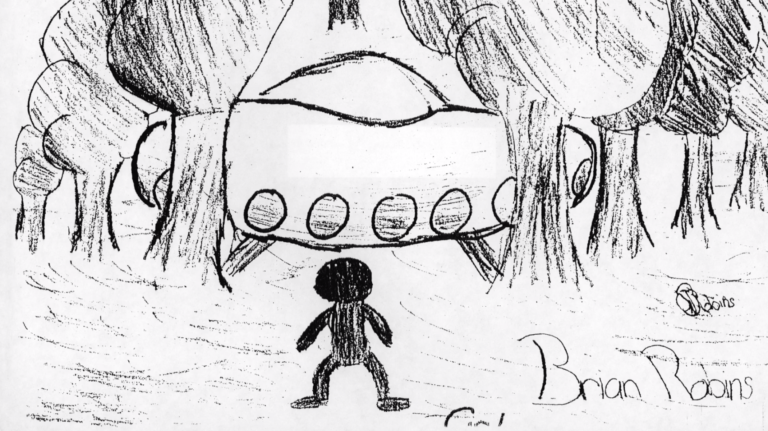Given the wide variety of witnesses and circumstances surrounding most UAP incidents, they still typically fall into two different categories. The first involves the sighting of unidentified light or craft in the sky, while the second involves “alien” beings, often of similar description.
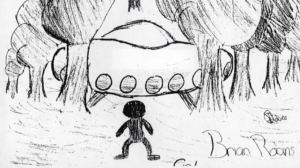

In many of the first types of cases, the unidentified lights or crafts are described as performing unusual maneuvers or traveling at incredible speeds, often without any identifiable means of propulsion or control surfaces. Military and civilian aviators have reported these types of incidents often enough in recent years that the United States Department of Defense has recently assembled a task force to study the potential national security issues such events may represent.
The second category of UAP incidents is typically much more personal, involving reports of direct encounters with living beings that often appear to be something other than human. Historically many of these cases include purported abductions, where self-described experiencers say they were taken aboard crafts by these otherworldly beings and sometimes even subjected to medical experiments.
Although witnesses in sightings of the first type often report feelings of awe or wonderment, the second type of experiencer often reports a much wider range of emotions, including feelings of fear, shame, or anger.
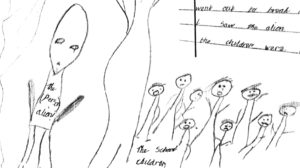

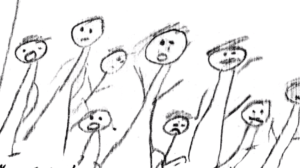

In his feature-length documentary “Ariel Phenomenon,” director Randall Nickerson looks at one of the most famous cases of the second type involving both craft and occupants: the 1994 mass sighting at the Ariel School in Zimbabwe, Africa. It is a portrayal of a potentially “alien” event, told from a decidedly human angle, including the powerful feelings such an event often leaves behind in those touched by the experience.
A TALE OF TRAUMA
“If you subtract the UFO element, this film is simply about the human experience of dealing with, and having to keep secret, a traumatic event that invites judgment,” says Nickerson, who has also reportedly had his own alien abduction experience, resulting in an appearance on the Oprah Winfrey show.
True to his word, Nickerson spends a significant amount of the film’s 100+ minute run time exploring the negative side of the Ariel School experience for many of the witnesses, particularly feelings of trauma. This includes students who witnessed the event, school staff who now often express regret at having not taken the children or their feelings serious enough at the time, and even a BBC reporter who risked his entire career to cover the sighting.
Side Note: That former BBC staffer’s story is peppered throughout the documentary, and is undoubtedly one of the most poignant aspects captured by Nickerson.
Like previous efforts by filmmaker James Fox, who dedicated the final segment of his UAP documentary “The Phenomenon” to the Ariel School event, and TV host Josh Gates, who also visited the school and spoke to witnesses for an episode of “Expedition: Unknown,” Nickerson shares footage of the witnesses both old and (relatively) new. This includes the original BBC footage, and more recent interviews as well.
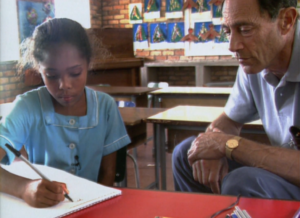

However, unlike Gates and Fox, Nickerson’s work with the students often has a heavier feeling about it, conveying the deep emotional issues many of the student witnesses still grapple with today. This includes ongoing frustrations around efforts to understand the nature of the event itself, as well as the trauma of trying to live a normal life without being branded a liar or mentally ill.
This message of trauma, and a hunt for acceptance, is without a doubt the heart of the film and is best conveyed by student witness Emily Trim.
Although not part of the original BBC documentary footage, viewers follow Trim in her return to Africa, and ultimately to the school where she and more than 60 other students had their traumatic, life-changing experience.
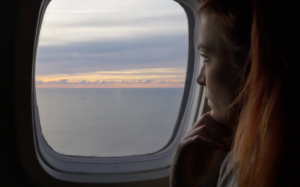

HOME AGAIN IN A FOREIGN LAND
Once back in Zimbabwe, Trim visits some past school staff members and their families, spends time with current students who know all about the 1994 event, and even stays at the home of one of her former teachers who is now running the school.
During her visit to the school itself, Trim is joined by one of her former classmates and a fellow witness. Together, the two women visit the location of their sighting before scanning through the archive of drawings and writings made by her and her fellow classmates back in 1994. This includes Trim’s original drawing.
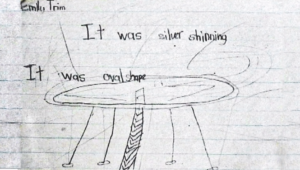

This walk down memory lane, which constitutes much of the film’s second half, is regularly intermixed with clips of student witnesses seemingly shot at different times and locations since 1994, all sharing their feelings about, and recollections of, the event. These often emotional exchanges add a lot of new detail that hasn’t been reported before, while also revisiting the themes of pain and trauma left behind by the whole experience.
WHAT IS NEW IN ARIEL PHENOMENON?
Expectation is a funny thing, especially in the UFO/UAP game. For reporters and filmmakers alike, the expectation of a pending article or a new documentary typically follows a similar pattern.
First, there is the excitement that something new is coming. Next is the guessing game, where everyone tries to figure out what will and will not be revealed. And finally, there is the feature’s release, followed almost immediately by two distinct reactions: “This is amazing!” and “this is horrible!”
The Ariel Phenomenon documentary will undoubtedly be no different.
For the “this is amazing” crowd, a ton of new footage and interviews pepper the entire length of the doc. Some of this is simply a more detailed review of the same incident, but in some cases, it is completely new information and new recollections.
For example, the experiences conveyed by witnesses in “Expedition: Unknown” and “The Phenomenon” often sound contradictory or inconsistent, making it hard for the viewer to get a clear picture of what exactly the group of children saw or didn’t see. Some reported seeing one occupant, while others recall two or even more “beings” on or around the craft. The same goes for crafts, where most of the students reported seeing one craft, but others reported or even drew multiple landed vehicles.
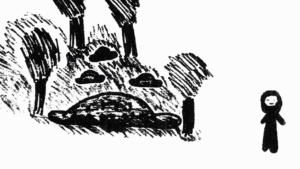

Nickerson delves deeper into this territory than Fox or Gates, including some modern-day discussions with students addressing some of those inconsistencies, as well as others trying to make sense of the oddly paced, slow motion, and sometimes repeating movements of the occupants they had witnessed. Again, there are no answers here, but the viewer at least gets a better sense of the differences between student recollections than in previous work, and can also see some of those witnesses trying to make sense of those varying accounts.
Also satisfying, a number of the original 1994 student drawings are featured in the documentary. In many ways, they are among the most powerful components of the entire documentary, and some of the strongest pieces of evidence that the children witnessed something extraordinary. As the old saying goes, a picture is worth a thousand words.
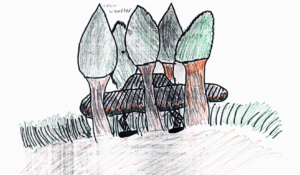

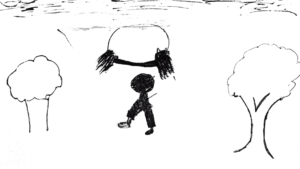

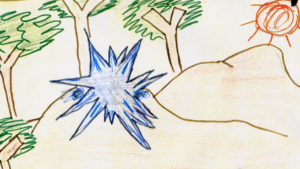

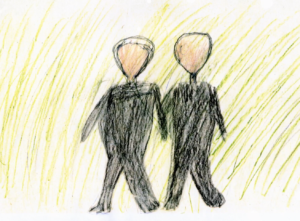

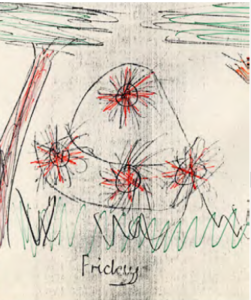

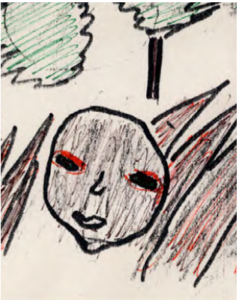

Nickerson also frames his documentary with news reports of a UAP in the area that seem to have happened within the same timeframe. This offers some excellent context not seen before while also unabashedly hinting at an extraterrestrial connection to the schoolyard landing.
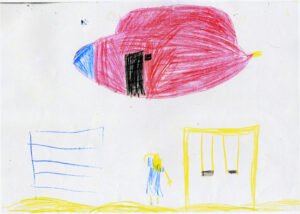

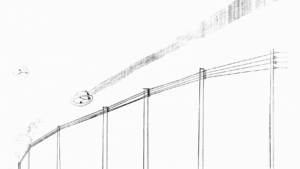

WHAT IS MISSING?
For the “this is horrible,” crowd, there is also plenty here to feel frustrated about.
For instance, clips of interviews with witnesses who are now older almost never include a date or time, leaving the viewer to wonder when this specific recollection is taking place. This is particularly frustrating when it appears the student is older than they were in 1994, but not necessarily 20-plus years older as they would be during the time Nickerson was working on this film.
Also, the entire return trip by Emily Trim seems to have taken place around 2015, but that is only based on one or two of the people she talks to commenting on how it has been just a bit over two decades since the incident. Because of this lack of time coding throughout much of the film, one is often left feeling disoriented as to when these recollections are taking place. When it comes to the freshness of memories, timing is critical.
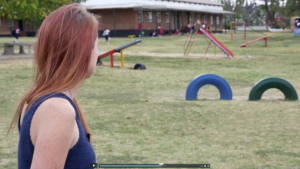

The other major frustration was the lack of raw data around the research process.
For instance, how many students of the original 60-plus witnesses was Nickerson able to track down? How may did he actually talk to? Did any refuse to talk to him? Did any refute the original experience, or indicate it was anything other than genuine? Do they keep in touch with each other? Have any of them experienced physical effects since the incident?
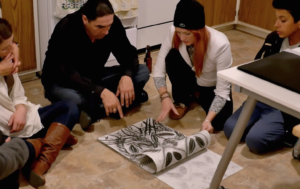

Fortunately for Debrief readers, Nickerson provided many of those details about his process in a press kit sent out to the media.
“I spoke with over forty past students and staff, but not all of them were willing to speak on camera about the experience,” Nickerson says in the press kit’s Q & A. “That told me, as a director and a human, that there’s something here.”
“Once I got to Zimbabwe, three of the teachers who were there at the time of the event were still teaching at Ariel, and I was amazed that they were still convinced it had actually happened,” he adds. “I found the names of the children who were at the school that year, and at that moment it was like “Oh, I can find these people.” Facebook had just started really growing, and none of this could have happened without Facebook.”
“I started contacting the former students and teachers, as well as others who were in the region who’d seen things that week; there were a number of events reported during the days leading up to the Ariel sighting,” Nickerson also adds. “I ended up being in Africa for nine and a half months for that first trip, tracking people down and interviewing them. I did about 130 interviews overall.”
“What was remarkable,” Nickerson finally concludes, “was that I didn’t find anyone who was at Ariel who said it didn’t happen, and I was looking for that. I interviewed one teacher who was once skeptical, but he’d changed his mind since and now believes the students.”
Again, it was wonderful that these tidbits about the process ended up in the press kit, but most viewers who don’t read The Debrief (shame on you) may come away from the film still wanting these types of details.
ARIEL PHENOMENON WORTH THE PRICE OF ADMISSION
Setting aside the frustrations listed above, there is still something significant going on in this film that can’t be ignored. Given the possibility that what the students experienced was a visitation from something decidedly not human, a sentiment shared by most of the people shown in the film, the results of that experience left many of them with a wide range of complex feelings they still grapple with to this day.
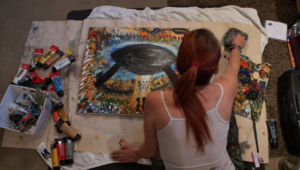

For Emily Trim, these lasting scars have led to a career in art, where she channels her often conflicted feelings about the experience through color and canvas. For others interviewed, many say that they are happy to have had the experience, and it is only the criticisms of others regarding its authenticity that make them wish it hadn’t happened. To anyone who follows any aspect of the UAP phenomenon, this sentiment is a familiar one.
Ultimately, there is a lot here worth seeing in Ariel Phenomenon, even if it isn’t exactly the deep, forensic analysis many may have been secretly hoping for.
For his part, Nickerson still captures a surprisingly emotional story that, when told through the eyes of Emily Trim and other student witnesses, delicately weaves the facts of the case into a fresh, particularly human narrative that feels as much like a dramatic feature film as a documentary.
“I don’t know what happened on that day in 1994,” Nickerson concludes in a letter to the media. “I wasn’t there. I’ve kept an open mind throughout this process. But I do believe that in this current era, we need to take a real look at this phenomenon – whatever it may turn out to be.”
Follow and connect with author Christopher Plain on Twitter @plain_fiction
